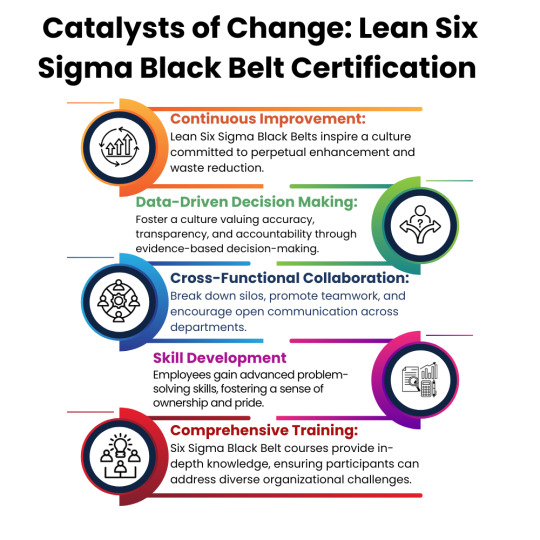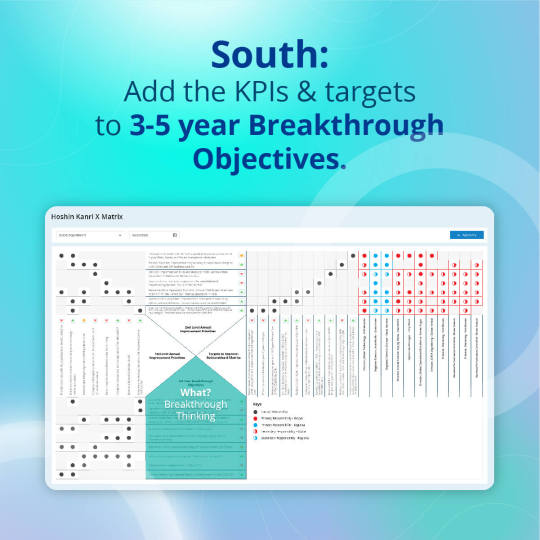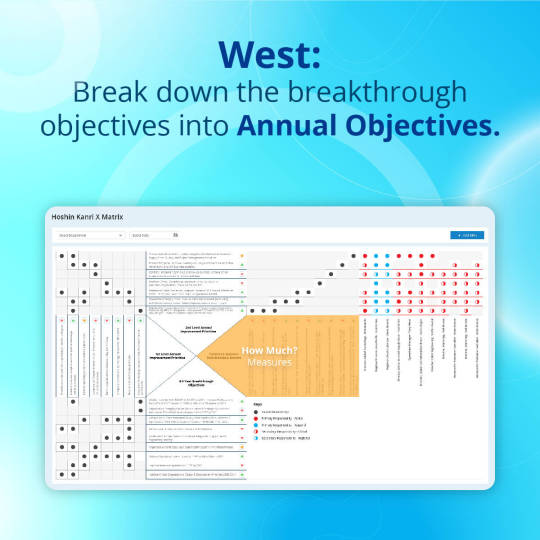#CrossFunctionalCollaboration
Explore tagged Tumblr posts
Text
💼 In today’s fast-moving world, success isn’t built in silos—it’s powered by cross-functional teams! 🤝 When marketing, tech, finance, and ops unite, innovation thrives, decisions are faster, and results are smarter. ⚡ From Apple’s product breakthroughs to Tesla’s agile development, top companies rely on collaborative teams to stay ahead. 🚀 Ready to break the barriers and build something extraordinary? Dive into the power of cross-functional teamwork! 💡
Read more- https://bit.ly/3R64llf
#crossfunctionalcollaboration#Crossfunctionalteams#customitsolutions#customsoftwaredevelopment#customtechdevelopment#customtechnologydevelopment
0 notes
Text
#FunctionalTeams#OrganizationalGoals#CrossFunctionalCollaboration#BreakingSilos#LEGOInnovationStrategy
0 notes
Text
Navigating Procurement Evolution: The Vital Role of Strategic Sourcing Managers
Originally Published on: SpendEdge |Strategic Sourcing Manager: A Key Player in the Procurement Evolution
Introduction The realm of procurement has experienced a notable shift from a mere cost-cutting endeavor to a strategic enabler of business value. At the forefront of this evolution are strategic sourcing managers, whose influence has grown significantly as they employ proactive strategies to enhance value throughout the supply chain.
The Dynamic Role of Strategic Sourcing Managers
Shifting Priorities Procurement has transcended its traditional focus on cost reduction and now strategically aligns with broader business objectives. Strategic sourcing managers now operate at the convergence of finance, operations, and supply chain management.
Key Responsibilities
Strategic Planning Strategic sourcing managers are entrusted with crafting sourcing strategies that harmonize with business objectives, leveraging market insights to foresee changes and optimize supplier interactions.
Supplier Relationship Management Cultivating robust partnerships is fundamental, nurturing collaboration and innovation while ensuring supplier performance and promptly addressing any issues.
Risk Management Identifying and mitigating supply chain risks are pivotal responsibilities for strategic sourcing managers, accomplished through meticulous contingency planning and alternative sourcing tactics.
Cost Optimization Thorough analysis of total cost of ownership (TCO) is essential for achieving savings without sacrificing quality, utilizing methods such as volume consolidation and process optimization.
Supplier Diversity and Sustainability Emphasizing inclusivity and sustainability within the supply chain, strategic sourcing managers encourage engagement with diverse suppliers and eco-friendly practices.
Performance Measurement Establishing KPIs and metrics empowers strategic sourcing managers to assess supplier performance, monitor savings, and drive continuous enhancement.
Stakeholder Collaboration Seamless collaboration across departments ensures alignment with organizational strategies, facilitating the integration of procurement activities.
Strategic Sourcing vs. Strategic Procurement
Strategic Sourcing This emphasizes effective selection and management of suppliers, optimizing value and minimizing risks through proactive engagement and relationship management.
Strategic Procurement Encompassing a broader scope, this involves activities beyond supplier management, including demand planning, category management, contract management, and technology optimization.
Skills for Success
Analytical Skills Proficiency in data analysis and market research enables critical evaluation of cost-saving opportunities and supplier performance.
Negotiation Skills Strong negotiation prowess secures favorable terms with suppliers while aligning with organizational objectives.
Communication Skills Effective communication fosters rapport with suppliers and facilitates collaboration across internal stakeholders.
Project Management Efficient execution of sourcing initiatives within established timelines and budgets is ensured through proficiency in project management methodologies.
Change Management The ability to drive organizational change facilitates adaptation to evolving market conditions and business requirements.
Cross-Functional Collaboration Leveraging diverse expertise across teams ensures achievement of strategic outcomes.
Adaptability Flexibility in navigating changing market dynamics and regulatory requirements ensures agility in procurement processes.
Impact on Organizational Success Strategic sourcing managers significantly contribute to organizational success by driving cost efficiency, mitigating risks, fostering innovation, and strengthening supplier relationships.
Conclusion In summary, strategic sourcing managers occupy a pivotal position in navigating the complexities of procurement. As procurement continues to evolve, their strategic acumen will remain indispensable in driving value and competitive advantage.
Contact us.
#StrategicSourcing#ProcurementEvolution#SupplyChainManagement#CostOptimization#SupplierRelationships#RiskMitigation#Innovation#Sustainability#CrossFunctionalCollaboration#OrganizationalSuccess
0 notes
Text
Maximizing Success through Cross-Functional Collaboration: A Comprehensive Guide

In today’s rapidly evolving business landscape, success is no longer achieved in silos. The interconnected nature of modern organizations demands collaboration across departments and disciplines to drive innovation, efficiency, and growth. Cross-functional collaboration has emerged as a cornerstone of effective teamwork, enabling organizations to harness diverse perspectives, skills, and resources toward common goals. In this comprehensive guide, we explore the principles, benefits, and best practices of cross-functional collaboration and how it can propel businesses toward success.
Understanding Cross-Functional Collaboration
At its essence, cross-functional collaboration refers to the practice of bringing together individuals from different departments or functional areas within an organization to work towards a shared objective. Unlike traditional hierarchical structures where departments operate independently, cross-functional collaboration fosters a culture of teamwork, communication, and synergy.
In a cross-functional team, members contribute their unique expertise and viewpoints, enriching the problem-solving process and driving innovation. By breaking down departmental silos and promoting interdisciplinary cooperation, organizations can tackle complex challenges more effectively and capitalize on emerging opportunities.
Key Components
1. Diverse Perspectives
One of the primary benefits of this collaboration is the diversity of perspectives it brings to the table. By involving individuals from different backgrounds, experiences, and skill sets, teams can approach problems from multiple angles and generate innovative solutions. Whether it’s marketing, finance, operations, or technology, each department offers unique insights that enrich the decision-making process.
2. Shared Goals

It hinges on alignment around shared goals and objectives. When team members have a clear understanding of the overarching mission, they can prioritize tasks, allocate resources, and make decisions that drive the organization forward. By establishing common metrics for success, teams can measure progress and celebrate achievements collectively.
3. Effective Communication
Clear and open communication is essential for fostering collaboration across functional boundaries. Team members must be able to share information, ideas, and feedback freely, regardless of their departmental affiliation. Whether through regular meetings, digital collaboration tools, or informal discussions, effective communication ensures that everyone is on the same page and working towards common goals.
4. Strong Leadership
Leadership plays a crucial role in facilitating cross-functional collaboration. Leaders must create a supportive environment where team members feel empowered to contribute their ideas and take ownership of their work. By setting clear expectations, providing guidance, and removing obstacles, leaders can foster a culture of collaboration and accountability within the team.
5. Conflict Resolution
In any collaborative endeavor, conflicts and disagreements are inevitable. Effective cross-functional teams address conflicts constructively, using them as opportunities for growth and learning. By encouraging open dialogue, active listening, and compromise, teams can resolve differences and strengthen relationships, ultimately enhancing their ability to work together towards shared goals.
Benefits of Cross-Functional Collaboration
1. Enhanced Innovation
Cross-functional collaboration fuels innovation by bringing together diverse perspectives, skills, and experiences. When individuals from different departments collaborate, they can combine their expertise to develop creative solutions to complex problems. By encouraging brainstorming, experimentation, and knowledge sharing, organizations can drive continuous innovation and stay ahead of the competition.
2. Improved Decision-Making
By involving stakeholders from various departments in the decision-making process, cross-functional collaboration leads to more informed and well-rounded decisions. When individuals with different expertise weigh in on a decision, they can identify potential risks, opportunities, and trade-offs that might otherwise go unnoticed. This comprehensive approach to decision-making minimizes blind spots and enhances the likelihood of success.
3. Increased Efficiency
It streamlines processes and eliminates redundancies by leveraging the expertise and resources of different departments. When teams work together towards common goals, they can optimize workflows, reduce bottlenecks, and improve overall efficiency. By breaking down silos and fostering collaboration, organizations can achieve greater results with fewer resources and less time.
4. Enhanced Employee Engagement
Collaboration fosters a sense of ownership and empowerment among employees, leading to higher levels of engagement and job satisfaction. When individuals feel that their contributions are valued and their voices are heard, they are more likely to invest themselves fully in their work. By creating opportunities for collaboration and recognition, organizations can cultivate a positive work culture that attracts and retains top talent.
5. Faster Time to Market

By streamlining communication and collaboration across departments, cross-functional teams can accelerate the pace of innovation and time to market for new products and services. When teams work together efficiently, they can bring ideas from conception to execution more quickly, allowing organizations to stay agile and responsive to changing market demands. This speed-to-market advantage can be a significant competitive differentiator in fast-paced industries.
Best Practices for Cross-Functional Collaboration
While the benefits are clear, successful implementation requires careful planning and execution. Here are some best practices to maximize the effectiveness of cross-functional teams:
1. Define Clear Roles and Responsibilities
Establish clear roles and responsibilities for each team member to ensure accountability and clarity. Define expectations around deliverables, deadlines, and communication channels to avoid confusion and minimize conflicts.
2. Promote Psychological Safety
Create a culture of psychological safety where team members feel comfortable expressing their opinions, asking questions, and taking risks. Encourage open dialogue and constructive feedback to foster trust and collaboration within the team.
3. Invest in Training and Development
Provide training and development opportunities to equip team members with the skills and knowledge they need to collaborate effectively. Offer workshops on communication, conflict resolution, and teamwork to strengthen the capabilities of cross-functional teams.
4. Use Technology Wisely

Leverage technology to facilitate collaboration and communication among team members. Invest in digital collaboration tools, project management software, and virtual meeting platforms to streamline workflows and enhance productivity.
5. Celebrate Successes
Recognize and celebrate the achievements of cross-functional teams to reinforce a culture of collaboration and teamwork. Whether it’s a successful product launch, a process improvement initiative, or a milestone accomplishment, acknowledge the contributions of team members and celebrate their collective efforts.
Conclusion
In an interconnected world where success is increasingly dependent on collaboration, cross-functional teams have become indispensable assets for organizations seeking to innovate, grow, and thrive. By bringing together individuals from different departments and disciplines, cross-functional collaboration enables organizations to harness diverse perspectives, skills, and resources toward common goals.
From driving innovation and improving decision-making to increasing efficiency and enhancing employee engagement, the benefits are far-reaching. As businesses navigate the complexities of the modern economy, fostering a culture of collaboration and teamwork remains essential for unlocking new opportunities and achieving sustainable success.
#CrossFunctionalCollaboration#teamwork#businessstrategy#innovations#efficiency#collaboration#synergy#sharedgoals#diversity#businesssuccess
0 notes
Text
Groval Euler’s- Retail Sales Transformation Project For A Health And Wellness Company

The retail sales landscape is constantly changing, with growing expectations of both B2B and B2C consumers. We had the mandate to build the sales capabilities of a young sales team working through a B2C model to sell health, nutrition and wellness services. A long-term roadmap was drawn to make the transformation project. The scope of the Sales Team training and capability building are outlined below Learn More:- https://grovaleulers.com/groval-eulers-retail-sales-transformation-project-for-a-health-and-wellness-company/
#Value selling#RetailSales#SalesTransformation#B2B#B2C#SalesCapabilities#TrainingAndDevelopment#ProductKnowledge#ValueSelling#CustomerCentricApproach#DataAnalytics#BrandPositioning#TrustBuilding#Adaptability#ContinuousImprovement#GoalSetting#FeedbackLoops#CrossFunctionalCollaboration#ConsumerExpectations#IndustryTrends
0 notes
Text
Transforming Organizational Culture: The Impact of Lean Six Sigma Black Belt Certification
Introduction:
In today’s dynamic business environment, organizations are constantly looking for ways to increase productivity, reduce waste, and foster a culture of continuous improvement. One powerful tool is likely to help to achieve these goals is Lean Six Sigma Black Belt certification. Not only do these certifications provide employees with advanced problem-solving skills, but they also play an important role in shaping and influencing organizational culture.

Understanding Lean Six Sigma Black Belt Certification:
Before delving into its impact on organizational culture, let’s briefly explain what Lean Six Sigma Black Belt certification entails. A Lean Six Sigma Black Belt is someone with a deep understanding of Lean and Six Sigma methodologies, able to lead complex improvement projects in an organization. Certification includes intensive training in statistical analysis, project management, and DMAIC (Define, Measure, Analyze, Improve, Control) strategy.
Driving Cultural Change through Lean Six Sigma Black Belt Certification:
1. Commitment to Continuous Improvement:
Lean Six Sigma Black Belt professionals are continuous improvement enthusiasts. By instilling a constantly improving mindset, these certified individuals inspire a culture that motivates employees to identify and eliminate inefficiencies in their processes.
2. Data-Driven Decision Making:
An important part of Lean Six Sigma Black Belt training is an emphasis on data-driven decision-making. This approach encourages organizations to rely on empirical evidence rather than observables, fostering a culture that values accuracy, transparency, and accountability.
3. Cross-Functional Collaboration:
Lean Six Sigma Black Belts typically work in different departments and functions. This collaboration breaks down silos within the organization and encourages a culture of teamwork and open communication. As a result, employees are more connected and better equipped to solve problems together.
The Ripple Effect on Employee Engagement:
1. Skill Development and Empowerment:
Employees who work with Lean Six Sigma Black Belt benefit from the use of advanced problem-solving techniques. This not only enhances their skills but also empowers them to actively contribute to program improvement initiatives, creating a sense of ownership and pride.
2. Recognition and Rewards:
Organizations that prioritize Lean Six Sigma often have systems in place to recognize and reward employees for their contributions to improvement projects. This recognition reinforces a positive culture where employees feel valued in their efforts at organizational excellence.
Conclusion:
In conclusion, the Lean Six Sigma Black Belt certification goes beyond equipping individuals with technical skills; It acts as a catalyst for cultural change in organizations. By encouraging a commitment to continuous improvement, data-driven decision making, cross-functional collaboration, and employee empowerment, Lean Six Sigma Black Belts play a key role in developing a successful organizational culture in business a efficiency, innovation and excellence Becoming an investment in Six Sigma Black Belt learning is an investment not only in individual professional development but also in the development of the broader organizational culture.
#LeanSixSigma#BlackBeltCertification#ContinuousImprovement#OrganizationalCulture#DataDrivenDecisions#CrossFunctionalCollaboration#EmployeeEngagement#Efficiency#Innovation#Excellence#ProfessionalDevelopment
0 notes
Text

AI promises benefits for Project Management, but it can’t replace the human aspects of the job, like Organizational Awareness and Cross Functional Collaboration, 2 of the 10 Next-Generation Project Management Office role skills, as reported by Harvard Business Review analysing a study by Gartner.
#AI#ProjectManagement#OrganizationalAwareness#CrossFunctionalCollaboration#ProjectManagementOffice#HarvardBusinessReview#remoteresource#remotework#smbs#remotehiring#supportsmallbusinesses#outsourcing#smallmediumbusinesses
0 notes
Text
The Green Revolution: Sustainable Practices in Modern Supply Chain Management
In an era where environmental consciousness is on the rise, the business landscape is undergoing a transformative shift towards sustainability. Nowhere is this shift more evident than in supply chain management, where companies are recognizing the importance of adopting eco-friendly practices to reduce their environmental footprint. This blog post delves into the growing significance of sustainability in supply chain management, exploring how businesses are embracing green initiatives and aligning profitability with responsible environmental stewardship.
1. Sustainable Sourcing: From Farm to Factory
Sustainable sourcing involves reevaluating every step of the supply chain, starting with raw materials. Companies are increasingly opting for responsibly sourced materials, prioritizing suppliers that adhere to ethical and environmental standards. This shift not only minimizes the ecological impact of production but also ensures fair treatment of workers in the supply chain.
2. Ethical Manufacturing: Putting People and the Planet First
Ethical manufacturing practices prioritize the well-being of both workers and the environment. From fair wages to safe working conditions, companies are emphasizing ethical considerations in manufacturing processes. Additionally, reducing energy consumption and waste in production facilities contributes to a more sustainable and socially responsible supply chain.
3. Green Logistics: Navigating the Eco-Friendly Route
Logistics play a pivotal role in supply chain sustainability. Companies are optimizing transportation routes, investing in fuel-efficient vehicles, and exploring alternative transportation methods, such as electric vehicles and eco-friendly packaging. Green logistics not only reduces carbon emissions but also contributes to cost savings.
4. Circular Supply Chains: Closing the Loop on Waste
The concept of a circular economy is gaining traction, emphasizing the importance of reducing, reusing, and recycling materials. Businesses are exploring ways to minimize waste throughout the supply chain, from the design phase to the end-of-life of products. Circular supply chains not only contribute to environmental conservation but also present opportunities for cost savings through resource efficiency.
5. Brand Reputation: The Impact of Going Green
Consumers are increasingly making purchasing decisions based on a company's commitment to sustainability. Adopting green practices in the supply chain enhances a brand's reputation, attracting environmentally conscious consumers. Positive brand perception not only strengthens customer loyalty but also sets the stage for long-term business success.
6. Regulatory Compliance: Navigating the Green Landscape
Governments and international bodies are introducing stringent environmental regulations, compelling companies to adopt sustainable practices. Staying ahead of regulatory requirements not only ensures compliance but also positions businesses as responsible corporate citizens.
7. Technology as an Enabler: Innovations for a Greener Tomorrow
Technology plays a crucial role in implementing sustainable practices. From data analytics for supply chain optimization to blockchain for transparent and traceable sourcing, technological innovations empower companies to make informed decisions that align with environmental objectives.
8. Collaboration for a Sustainable Future
Achieving a truly sustainable supply chain requires collaboration across industries. Companies are forming partnerships and collaborations to share best practices, collectively address environmental challenges, and drive systemic change towards sustainability.
In conclusion, the green revolution in supply chain management is not just a trend but a necessity for businesses aiming for long-term success. By embracing sustainable practices, companies can reduce their environmental impact, build a positive brand image, and contribute to a more eco-friendly future. The integration of green initiatives into supply chain management is not just a responsibility; it's an opportunity for businesses to thrive in a world where sustainability is at the forefront of consumer and regulatory expectations.
#SustainableSupplyChain#GreenLogistics#EthicalManufacturing#CircularEconomy#SupplyChainManagement#EcoFriendlyPractices#BusinessSustainability#EnvironmentalStewardship#GreenRevolution#CrossFunctionalCollaboration#RemoteWorkStrategies#VirtualCollaboration#RemoteTeamManagement#AIinBusinessOperations#ArtificialIntelligence#Innovation#FutureOfWork#CorporateResponsibility#BrandReputation#RegulatoryCompliance#TechnologyInSupplyChain#CollaborationForSustainability
0 notes
Text
Ultimate Guide to Strategy Deployment using Hoshin Kanri X-Matrix
Read More: https://balancedscorecard.ltslean.com/x-matrix-strategic-plan-hoshin-kanri







#balancedscorecard#datapoint#HoshinKanri#XMatrix#StrategicPlanning#GoalAlignment#BusinessStrategy#ContinuousImprovement#ManagementFramework#Objectives#KeyResults#PerformanceMetrics#VisualManagement#Leadership#OrganizationalAlignment#ExecutionExcellence#CrossFunctionalCollaboration#StrategyExecution#KPIs#BusinessPerformance#DailyManagementSystem#leanmanagement#continuousimprovement#visualmanagement
0 notes